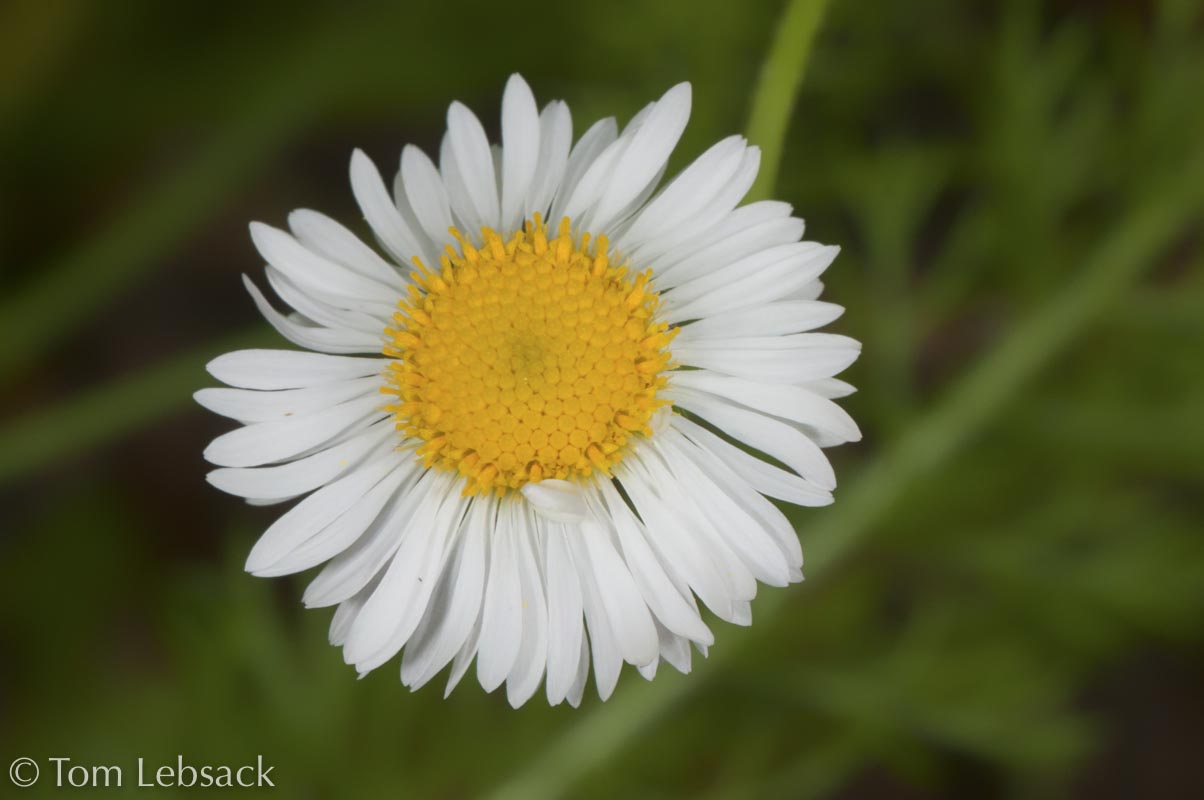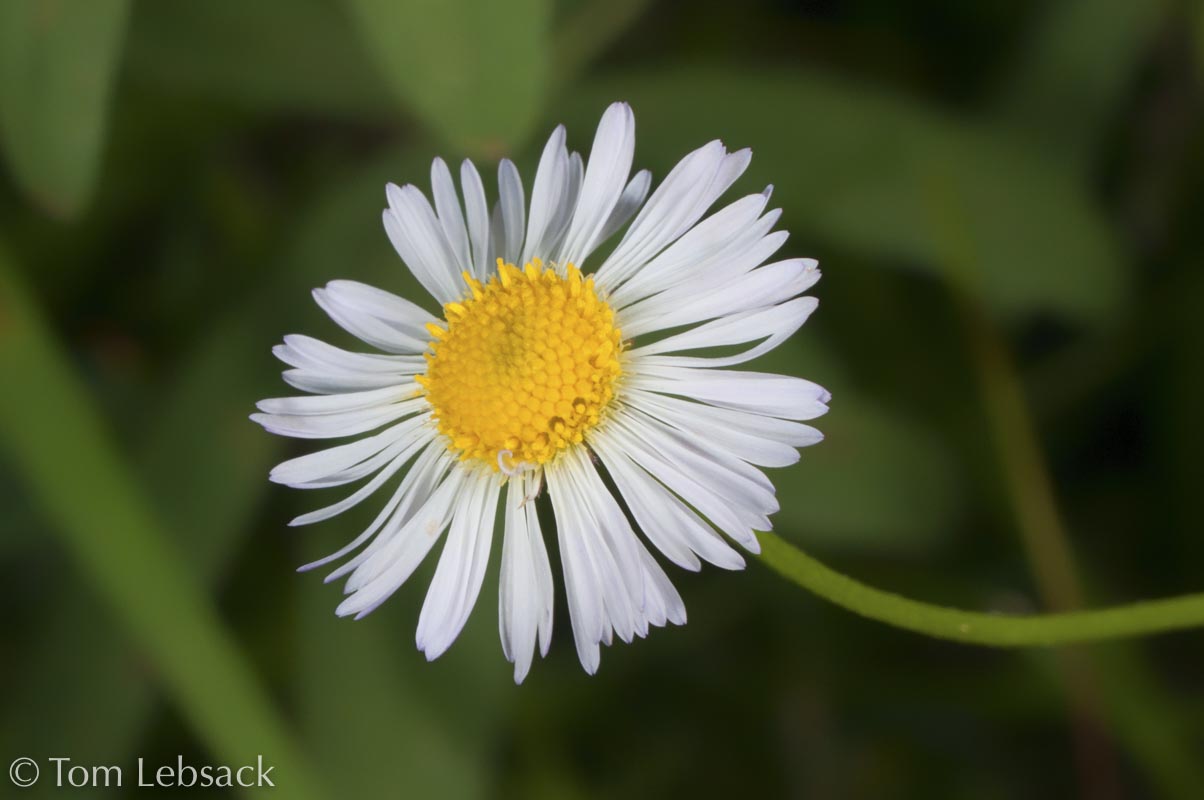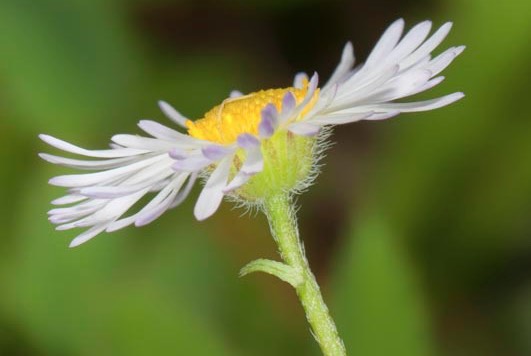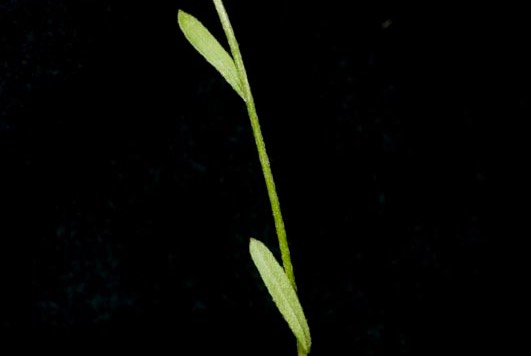Erigeron flagellaris
(Trailing Daisy)
| Scientific Name | Erigeron flagellaris | USDA PLANTS Symbol | ERFL |
| Common Name | Trailing Daisy, Trailing Fleabane | ITIS Taxonomic Serial No. | 35865 |
| Family | Asteraceae (Sunflower) | SEINet Reference |
Click Here |
| Description |
Life zones and habitat: Plains to subalpine (5000 to 11800 ft.); often moist areas in meadows, open areas in grasslands and woodlands. Plant: Biennial or short-lived perennial 10 to 16 inches tall with weak, slender stem and leafy, prostrate stolons (runners); erect stems produced initially eventually bear flowers followed by sterile runners; fertile stems are leafy only toward the base; leafy sterile stems (stolons) are long, trailing, and often rooting at the tips. Leaves: Alternate, oblanceolate stem leaves, lower leaves on long petioles and up to 1 inch long with entire or dentate margins; smaller upper leaves are sessile, linear to narrowly oblanceolate, and hairy; basal leaves may be persistent (lasting through blooming), broadly oblanceolate to elliptic, 3/4 to 2-1/8 inches long and 1/8 to 3/8-inch wide. Inflorescence: Small, solitary composite flower heads 3/4-inch across with many (40 to 125) white rays, blue- or pink-tinged underneath, yellow disk florets; pointed, hairy and sticky phyllaries. Bloom Period: May to July. References: "Flora of Colorado" by Jennifer Ackerfield, "Guide to Colorado Wildflowers" by G.K. Guennel and SEINet. Plant located thanks to Jane Hendrix, Breckenridge, CO. |
BONAP Distribution Map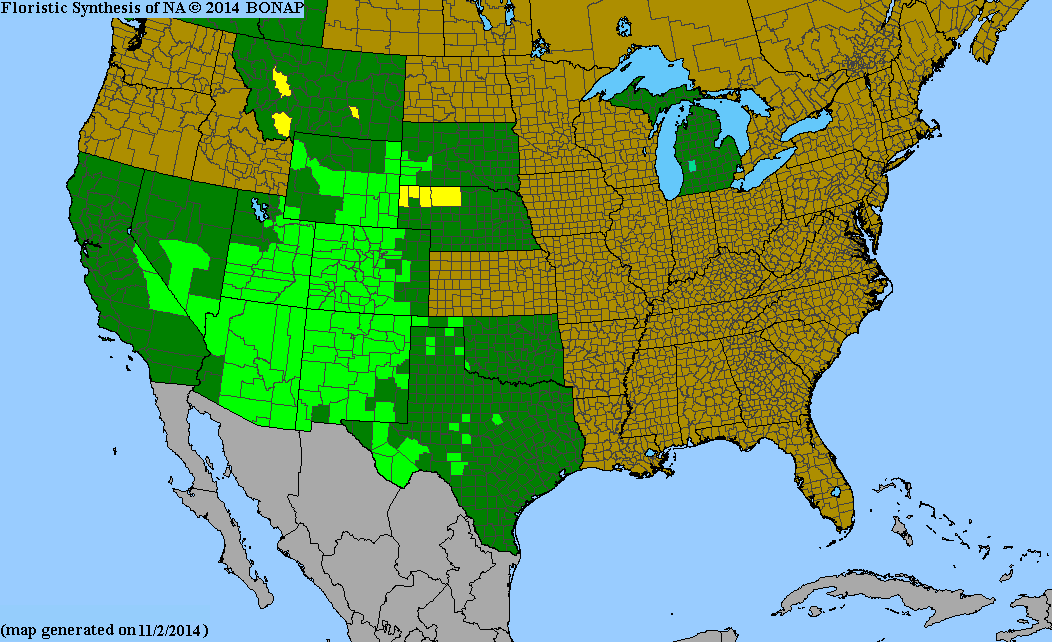 Map Color Key |
Colorado Status: Native |
© Tom Lebsack 2025
Banner photo: Castilleja rhexifolia and a brewing storm over the San Juan Mountains
I try to provide accurate, up-to-date, and relevant information, but cannot guarantee the completeness or accuracy of any information presented on this website. I use authoritative references to insure high standards of accuracy and review and update the information frequently.
